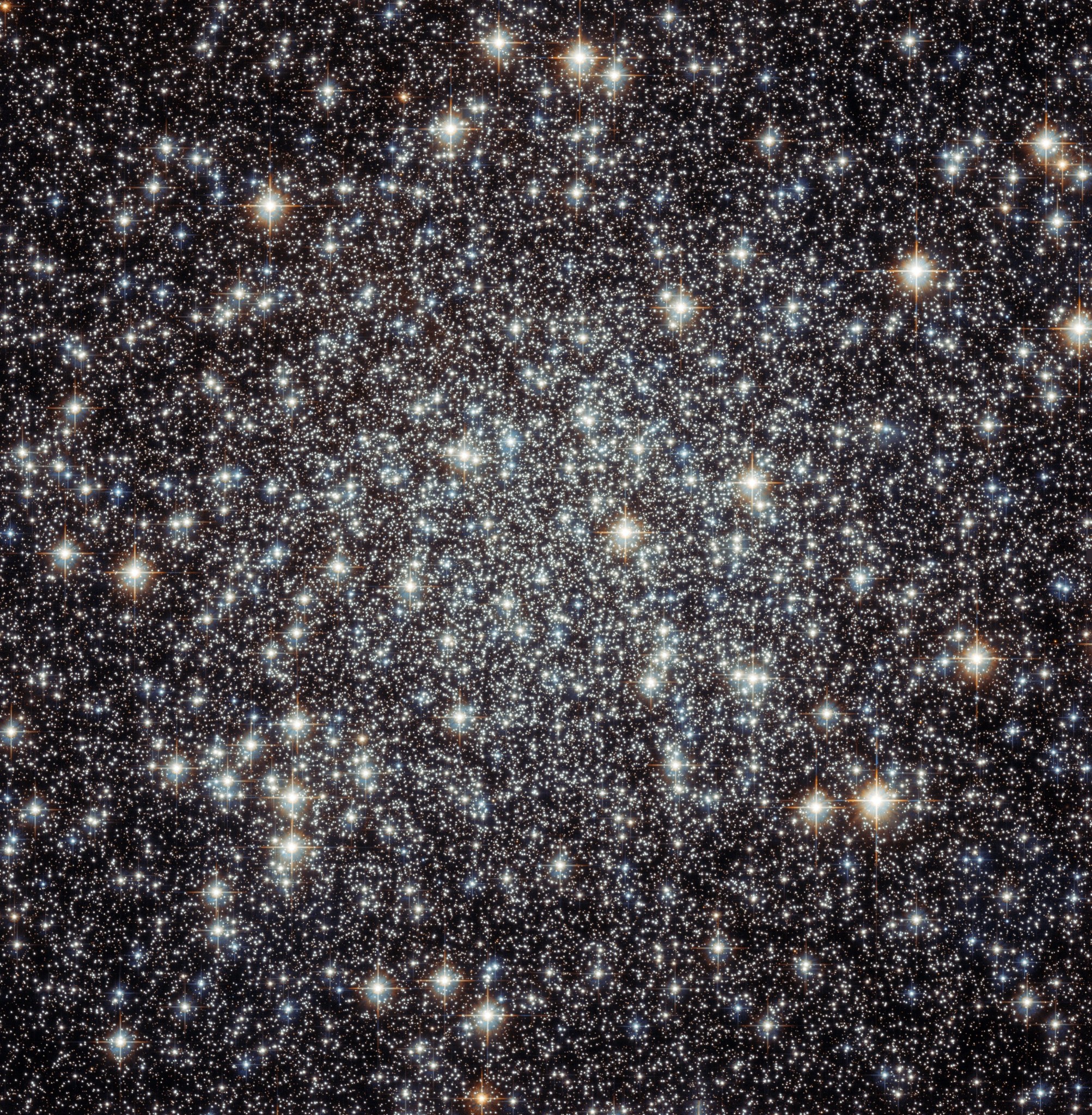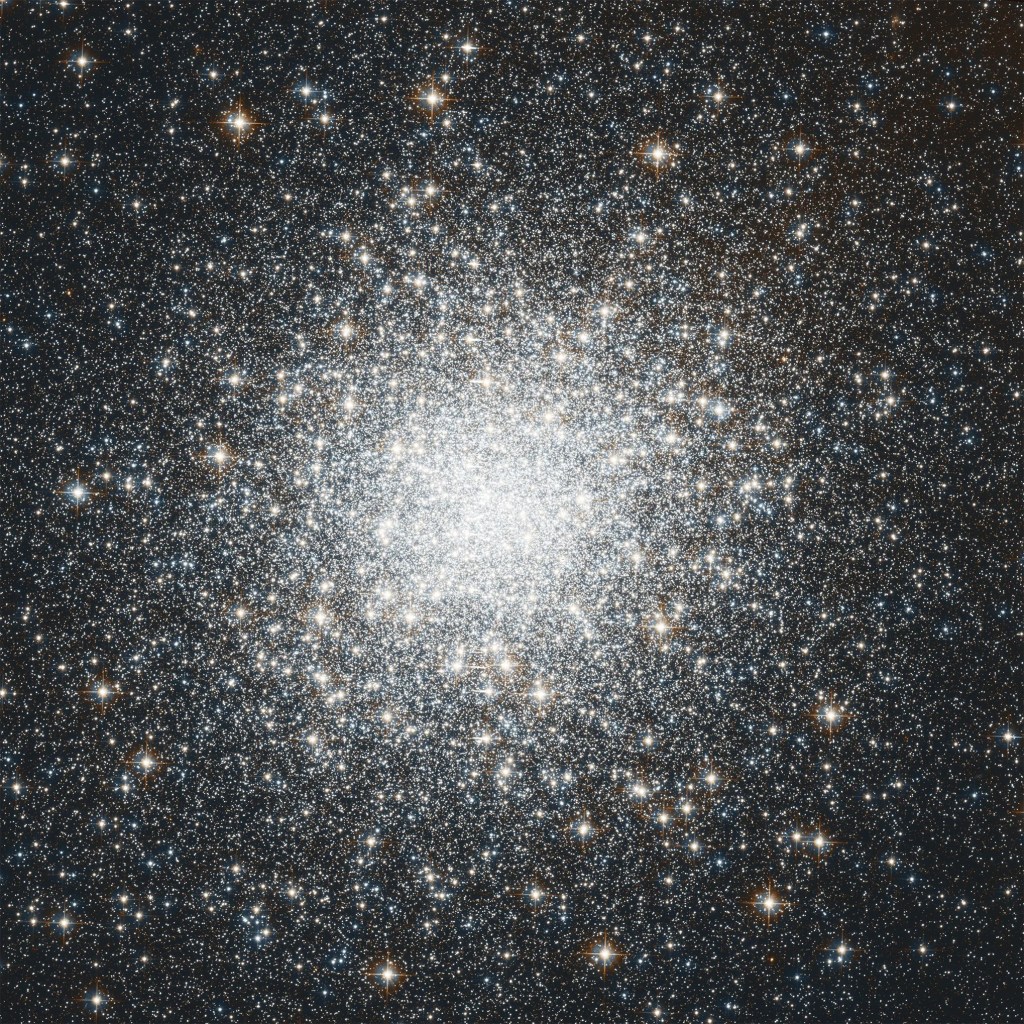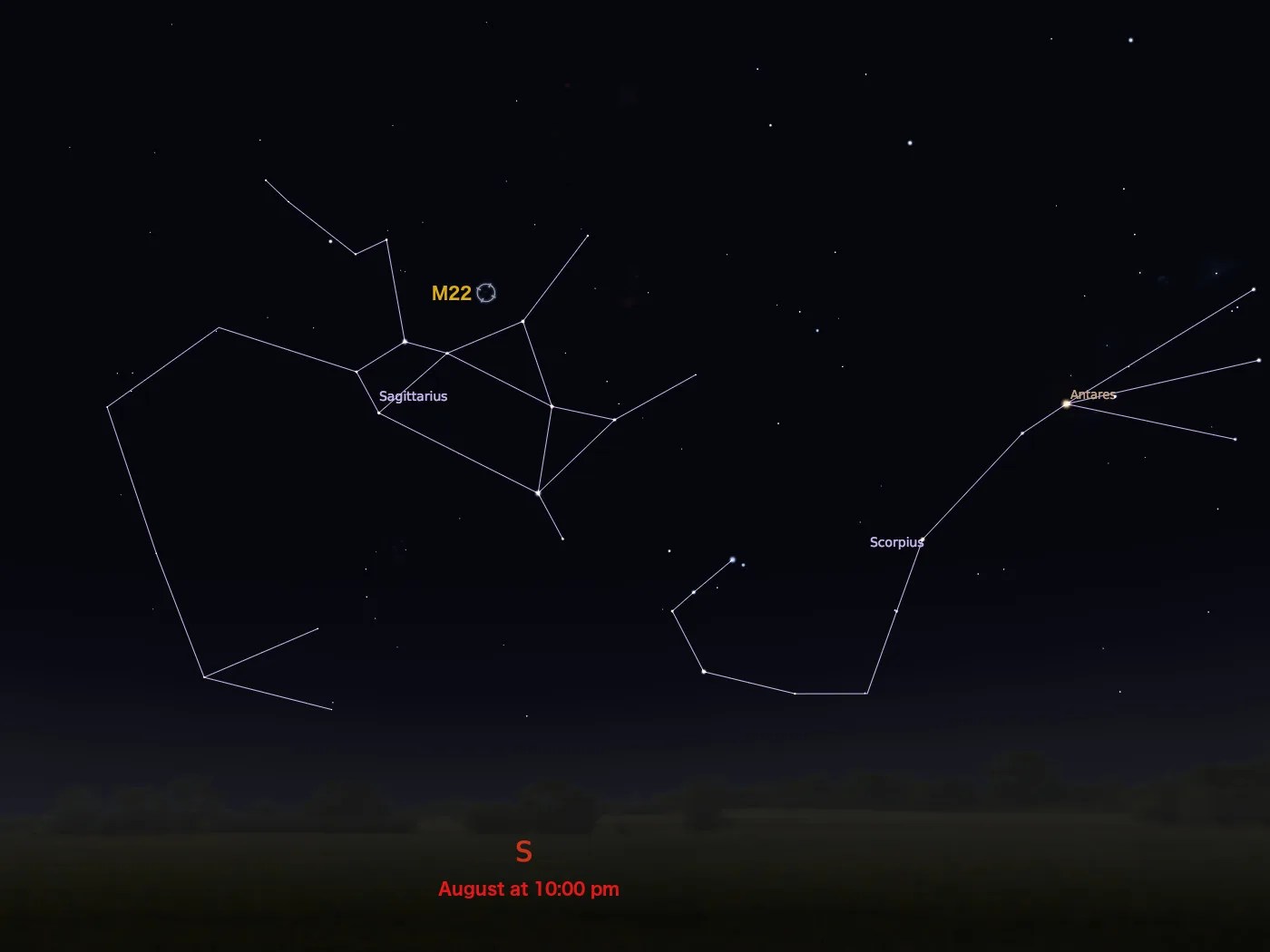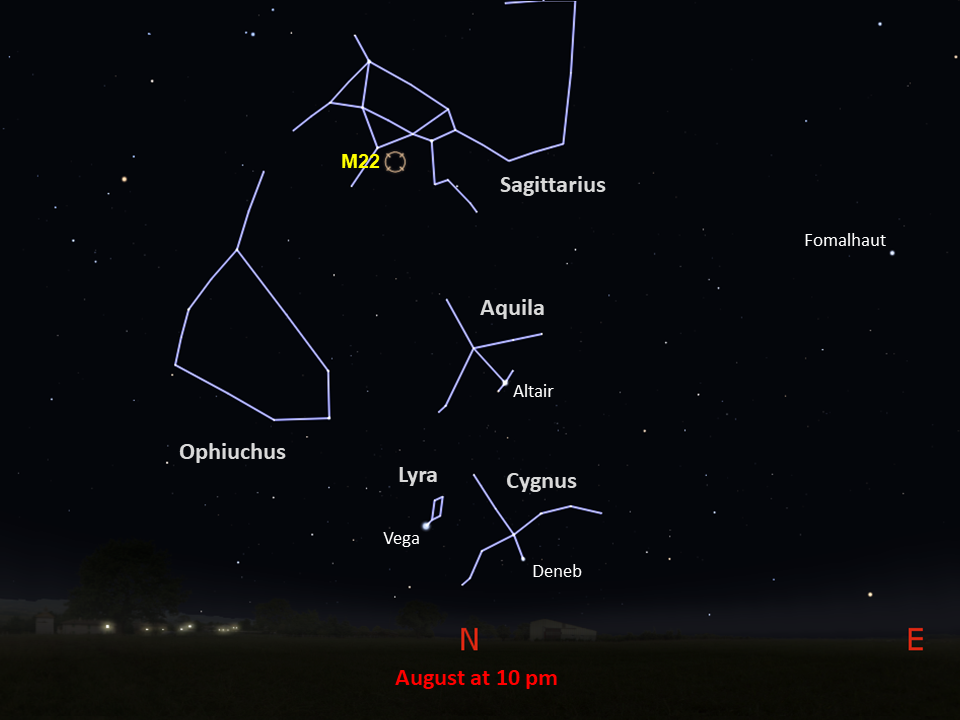Messier 22
Messier 22 offered Hubble some interesting discoveries.
Distance
10,000 light-years
Apparent Magnitude
5.1
constellation
Sagittarius
object type
Globular Cluster

While scanning the night sky in search of Saturn in August of 1665, the German amateur astronomer Abraham Ihle made an amazing discovery: the globular cluster Messier 22. It was one of the first objects of its kind ever detected. Located 10,000 light-years from Earth in the constellation Sagittarius, the cluster’s relatively bright apparent magnitude of 5.1 makes it a popular target for today’s amateur astronomers. In ideal conditions, M22 can be seen with the naked eye. The best time to observe the cluster is during August.
M22 was discovered in 1665 by Abraham Ihle, making it one of the first globular clusters ever to be discovered. This is not surprising, as it is one of the brightest globular clusters visible from the northern hemisphere, located close to the Galactic Bulge in the sky — the dense mass of stars at the center of the Milky Way. The cluster has a diameter of about 70 light-years and, when looking from Earth, appears to take up a patch of sky the size of the full Moon. Despite its relative proximity to us, the light from the stars in the cluster is not as bright as it should be, as it is dimmed by dust and gas located between us and the cluster.
As they are leftovers from the early Universe and contain some of the oldest known stars, globular clusters are popular objects of study for astronomers. M22 has some additional features that are particularly fascinating: two stellar-mass black holes, and six planet-sized objects (discovered by Hubble) that are not orbiting stars. The cluster is also one of only four of its kind ever found to host a planetary nebula — a short-lived gaseous shell ejected by a massive star at the end of its life.
Hubble’s stunning image, created using visible and infrared observations, captured the densely packed heart of M22.
For more information about Hubble’s observations of M22, see:
Explore Hubble's Messier Catalog
The following pages contain some of Hubble’s best images of Messier objects.

Overview The Messier catalog, begun by astronomer Charles Messier in the 18th Century and revised over the years, includes some…

Better known as the Crab Nebula, Charles Messier originally mistook Messier 1 for Halley’s Comet, which inspired him to create…

Hubble's image of Messier 2 is comprised of visible and infrared wavelengths of light.
































